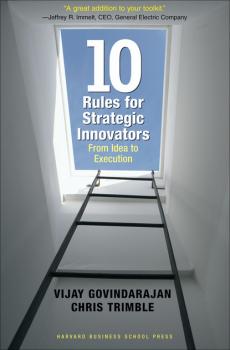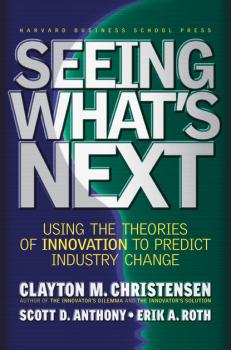ТОП просматриваемых книг сайта:
Экономика
Различные книги в жанре Экономика, доступные для чтения и скачиванияАннотация
Your company's data has the potential to add enormous value to every facet of the organization – from marketing and new product development to strategy to financial management. Yet if your company is like most, it's not using its data to create strategic advantage. Data sits around unused – or incorrect data fouls up operations and decision making.In Data Driven, Thomas Redman, the «Data Doc,» shows how to leverage and deploy data to sharpen your company's competitive edge and enhance its profitability. The author reveals:· The special properties that make data such a powerful asset· The hidden costs of flawed, outdated, or otherwise poor-quality data· How to improve data quality for competitive advantage· Strategies for exploiting your data to make better business decisions· The many ways to bring data to market· Ideas for dealing with political struggles over data and concerns about privacy rightsYour company's data is a key business asset, and you need to manage it aggressively and professionally. Whether you're a top executive, an aspiring leader, or a product-line manager, this eye-opening book provides the tools and thinking you need to do that.
Аннотация
While no one likes to be the bearer of bad news, managers are sometimes faced with the difficult task of having to dismiss an employee. In this book, you'll learn how to effectively manage a dismissal–including making key decisions before, during, and after the critical event. Handled skillfully, dismissing an employee can set your team–and your company–on a positive new path.
Аннотация
Renowned playwright George Bernard Shaw once said «The reasonable man adapts himself to the world, the unreasonable one persists in trying to adapt the world to himself. Therefore all progress depends on the unreasonable man.» By this definition, some of today's entrepreneurs are decidedly unreasonable–and have even been dubbed crazy. Yet as John Elkington and Pamela Hartigan argue in The Power of Unreasonable People, our very future may hinge on their work.Through vivid stories, the authors identify the highly unconventional entrepreneurs who are solving some of the world's most pressing economic, social, and environmental problems. They also show how these pioneers are disrupting existing industries, value chains, and business models–and in the process creating fast-growing markets around the world.By understanding these entrepreneurs' mindsets and strategies, you gain vital insights into future market opportunities for your own organization. Providing a first-hand, on-the-ground look at a new breed of entrepreneur, this book reveals how apparently unreasonable innovators have built their enterprises, how their work will shape risks and opportunities in the coming years, and what tomorrow's leaders can learn from them.Start investing in, partnering with, and learning from these world-shaping change agents, and you position yourself to not only survive but also thrive in the new business landscape they're helping to define.
Аннотация
China and India are home to one-third of the world's population. And they're undergoing social and economic revolutions that are capturing the best minds–and money–of Western business. In Billions of Entrepreneurs, Tarun Khanna examines the entrepreneurial forces driving China's and India's trajectories of development. He shows where these trajectories overlap and complement one another–and where they diverge and compete. He also reveals how Western companies can participate in this development.Through intriguing comparisons, the author probes important differences between China and India in areas such as information and transparency, the roles of capital markets and talent, public and private property rights, social constraints on market forces, attitudes toward expatriates abroad and foreigners at home, entrepreneurial and corporate opportunities, and the importance of urban and rural communities. He explains how these differences will influence China's and India's future development, what the two countries can learn from each other, and how they will ultimately reshape business, politics, and society in the world around them.Engaging and incisive, this book is a critical resource for anyone working in China or India or planning to do business in these two countries.
Аннотация
The Entrepreneurial Mindset offers a refreshingly practical blueprint for thinking and acting in environments that are fast-paced, rapidly changing, and highly uncertain. It provides both a guide to energizing the organization to find tomorrow's opportunities and a set of entrepreneurial principles you can use personally to transform the arenas in which you compete. The authors present simple but powerful ways to stop thinking and acting by the old rules and start thinking with the discipline of a habitual entrepreneur.They show how to: eliminate paralyzing uncertainty by creating an entrepreneurial frame that shapes a shared understanding of what is to be accomplished; create a richly stocked opportunity register to redesign existing products, find new sources of differentiation, resegment existing markets, reconfigure market spaces, and seize the huge upside potential of breakthroughs; build a dynamic portfolio of businesses and options that continuously move your organization toward the future while simultaneously leaving the past behind; execute dynamically your ideas so that you can move fast, with confidence and without undue risk; and develop your own way of leading with an entrepreneurial mindset to create a vibrant entrepreneurial climate within your organization.
Аннотация
The best organizations have the best talent. . . Financial incentives drive company performance. . . Firms must change or die. Popular axioms like these drive business decisions every day. Yet too much common management “wisdom” isn’t wise at all—but, instead, flawed knowledge based on “best practices” that are actually poor, incomplete, or outright obsolete. Worse, legions of managers use this dubious knowledge to make decisions that are hazardous to organizational health.Jeffrey Pfeffer and Robert I. Sutton show how companies can bolster performance and trump the competition through evidence-based management, an approach to decision-making and action that is driven by hard facts rather than half-truths or hype. This book guides managers in using this approach to dismantle six widely held—but ultimately flawed—management beliefs in core areas including leadership, strategy, change, talent, financial incentives, and work-life balance. The authors show managers how to find and apply the best practices for their companies, rather than blindly copy what seems to have worked elsewhere.This practical and candid book challenges leaders to commit to evidence-based management as a way of organizational life—and shows how to finally turn this common sense into common practice.
Аннотация
Does it seem you’ve formulated a rock-solid strategy, yet your firm still can’t get ahead? If so, construct a solid foundation for business execution—an IT infrastructure and digitized business processes to automate your company’s core capabilities. In Enterprise Architecture as Strategy: Creating a Foundation for Business Execution, authors Jeanne W. Ross, Peter Weill, and David C. Robertson show you how.The key? Make tough decisions about which processes you must execute well, then implement the IT systems needed to digitize those processes. Citing numerous companies worldwide, the authors show how constructing the right enterprise architecture enhances profitability and time to market, improves strategy execution, and even lowers IT costs. Though clear, engaging explanation, they demonstrate how to define your operating model—your vision of how your firm will survive and grow—and implement it through your enterprise architecture. Their counterintuitive but vital message: when it comes to executing your strategy, your enterprise architecture may matter far more than your strategy itself.
Аннотация
In 1996, John P. Kotter's Leading Change became a runaway best seller, outlining an eight-step program for organizational change that was embraced by executives around the world. Then, Kotter and co-author Dan Cohen's The Heart of Change introduced the revolutionary «see-feel-change» approach, which helped executives understand the crucial role of emotion in successful change efforts. Now, The Heart of Change Field Guide provides leaders and managers tools, frameworks, and advice for bringing these breakthrough change methods to life within their own organizations. Written by Dan Cohen and with a foreword by John P. Kotter, the guide provides a practical framework for implementing each step in the change process, as well as a new three-phase approach to execution: creating a climate for change, engaging and enabling the whole organization, and implementing and sustaining change. Hands-on diagnostics—including a crucial «change readiness module»—reveal the dynamics that will help or hinder success at each phase of the change process. Both flexible and scaleable, the frameworks presented in this guide can be tailored for any size or type of change initiative. Filled with practical tools, checklists, and expert commentary, this must-have guide translates the most powerful approaches available for creating successful change into concrete, actionable steps for you and your organization. Dan Cohen is the co-author, with John P. Kotter, of The Heart of Change, and a principal with Deloitte Consulting, LLC.
Аннотация
Even world-class companies, with powerful and proven business models, eventually discover limits to growth. That's what makes emerging high-growth industries so attractive. Although they lack a proven formula for making a profit, these industries represent huge opportunities for the companies that are fast enough and smart enough. But constructing tomorrow's businesses while simultaneously sustaining excellence in today's, demands a delicate balance. It is a quest fraught with contradiction and paradox. Until now, there has been little practical guidance. Based on an in-depth, multiyear research study of innovative initiatives at ten large corporations, Vijay Govindarajan and Chris Trimble identify three central challenges: forgetting yesterday's successful processes and practices; borrowing selected resources from the core business; and learning how the new business can succeed. The authors make recommendations regarding staffing, leadership roles, reporting relationships, process design, planning, performance assessment, incentives, cultural norms, and much more. Breakthrough growth opportunities can make or break companies and careers. Ten Rules for Strategic Innovators is every leader's guide to execution in unexplored territory.
Аннотация
Every day, individuals take action based on how they believe innovation will change industries. Yet these beliefs are largely based on guesswork and incomplete data and lead to costly errors in judgment. Now, internationally renowned innovation expert Clayton M. Christensen and his research partners Scott D. Anthony and Erik A. Roth present a groundbreaking framework for predicting outcomes in the evolution of any industry. Based on proven theories outlined in Christensen's landmark books The Innovator's Dilemma and The Innovator's Solution, Seeing What's Next offers a practical, three-part model that helps decision-makers spot the signals of industry change, determine the outcome of competitive battles, and assess whether a firm's actions will ensure or threaten future success. Through in-depth case studies of industries from aviation to health care, the authors illustrate the predictive power of innovation theory in action.










